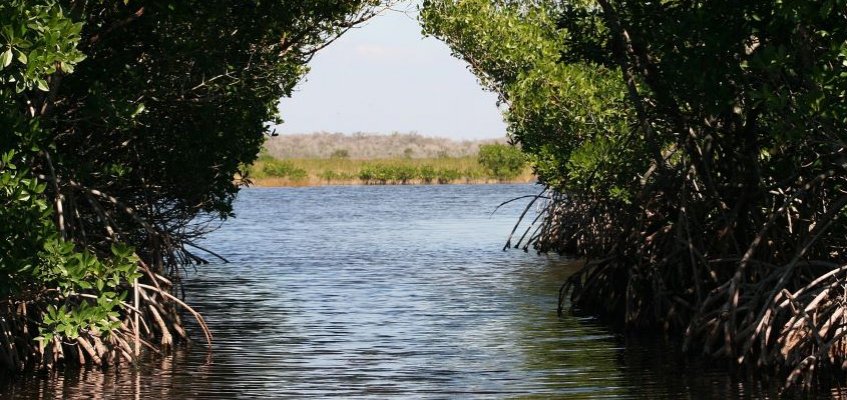Protecting a vital ecological resource with carbon credits
Mangrove forests are a critical part of tropical oceanic ecosystems. The only trees that can thrive in salt water, mangroves grow along coastlines, providing defence against erosion and ensuring vital habitats for biodiversity. But they are under attack from human activities such as deforestation, coastal development and the harvesting of fuel and timber.
Professor and ecologist Mark Huxham from Edinburgh Napier University is behind an award-winning community project in Kenya that has halted the destruction of mangrove forests by selling carbon credits, both to fund restoration work and to benefit the local population.
Selling carbon credits on the global market
Mangroves are among the world’s top ecosystems for carbon storage per unit area, and in 2008, Professor Huxham realised that the emerging market for carbon credits – by which businesses and individuals offset their carbon footprint by paying for projects that remove carbon dioxide from the atmosphere – could provide an exciting opportunity.
Working closely with the Gazi Bay community and with scientists from Kenya’s Marine and Fisheries Research Institute, Professor Huxham and colleagues began a four-year accreditation process that involved multiple research initiatives, including modelling of predicted mangrove destruction and the accurate measurement of buried carbon in the forest sediment.
In 2013 the team launched Mikoko Pamoja – Swahili for ‘Mangroves Together’ – the world’s first community mangrove conservation project to be funded by the selling of carbon credits.
Professor Huxham says: “We had to go out and find our customers on the global market, and the first few years were tough. But we founded a charity (Association for Coastal Ecosystem Services) to provide a transparent and credible structure, and the volunteers, made up mostly of staff and students at Edinburgh Napier, helped hugely with the marketing and sale of the credits”.
Transforming village life
Seven years on, the project has successfully sold over 8500 carbon credits on the global market, raising over £70,000 for conservation and community development. An elected committee of local villagers runs Mikoko Pamoja, alongside a salaried project coordinator who helps to organise forest conservation, replanting activity and monitoring, all done by citizen volunteers. 117 hectares of mangroves have been protected, and new forests have been planted.
All remaining income goes to a community fund, whose expenditures have transformed village life. Professor Huxham says: “We’ve been able to supply water to a local school, where previously 800 children had no access to drinking water, and have installed permanent water points for the villages.” Rates of diarrhoea have halved since the installation.
Education is another focus, with money spent on new school buildings, furniture and textbooks, and the provision of a bursary and sponsorships. There have been measurable improvements in educational achievement.
In 2017 Mikoko Pamoja won the UN’s Equator Prize, which recognises outstanding nature-based sustainable initiatives that reduce poverty in communities. This helped attract funding for the setup of Vanga Blue Forest, another mangrove site three times the size of the original, in southern Kenya. The site is operational and its credits will be available to buy next year.
More than 20,000 mangrove trees have been planted across both sites, restoring degraded land, stabilising shorelines and supporting fish, crustaceans and other sea life.
Expanding the scheme to seagrass
Now, the researchers hope to expand Mikoko Pamoja’s carbon credits scheme to include seagrass, another crucial habitat for fish at risk of destruction from fishermen’s anchors and nets.
The success of the project has led to interest from other ecologists and conservationists, and similar projects have been set up in Gambia and Madagascar, with support from the team.
Professor Huxham adds: “Our long-term vision is to share our expertise and help others to flourish. We know that carbon offsetting is just one part of the response to the climate crisis, but for us it has provided the necessary financing to help protect these vital resources.”

